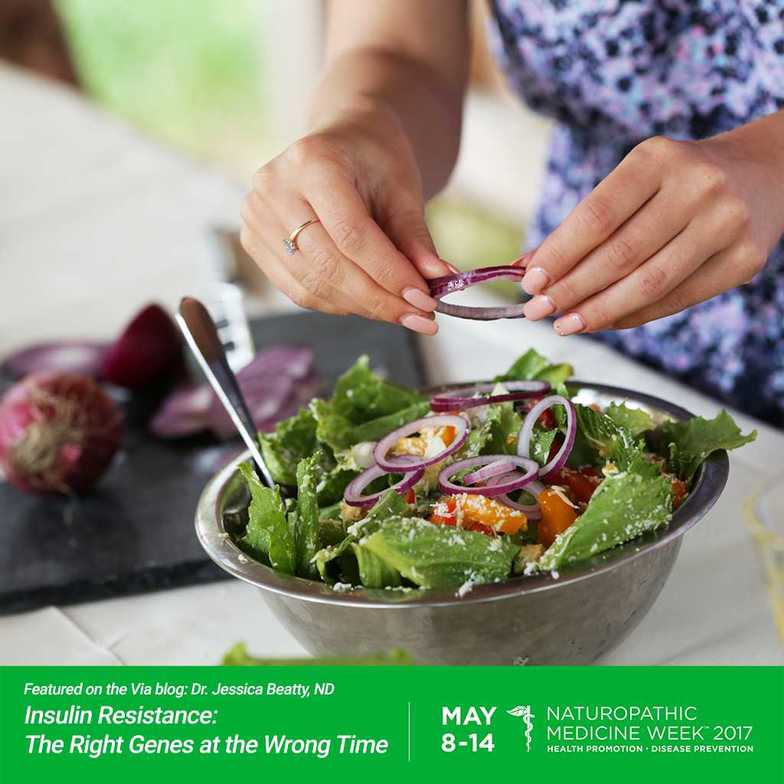
Insulin resistance is so common in our population that as much as 50% of the population carry genes related to the expression of insulin resistance. This is likely an indication of an ancient genetic expression of caloric thrifty-ness, unfortunately expressed during the wrong era. The body composition of someone who is expressing insulin resistance is typically someone who carries excessive fatty tissue. Insulin resistance is marked by elevated levels of circulating insulin alongside elevated levels of blood glucose, elevated serum triglycerides and cholesterol, elevated lipid peroxidation indicating oxidative stress and often elevated blood pressure due to increased peripheral resistance. This is an anabolic state, leading toward fat storage, and is difficult to reverse unless drastic diet and lifestyle interventions are established. Pharmacointerventions are not effective at addressing the root cause as they do not reduce serum insulin. The correct therapeutic intervention should be targeted toward improving insulin sensitivity.
There are two medicinal interventions that do this: diet and exercise. A review study was done looking at 23 different publications using a low carbohydrate, high healthy fat diet in the treatment of insulin resistance. Across the board improvements were seen in all parameters including waist circumfirence, blood pressure, serum HDL, serum triglycerides, blood sugars and serum insulin. The only parameter that did not reduce was LDL. Markers of individual apo- lipoproteins were not studied, which would be a better indicator for the actual risk of the onset of cardiovascular disease. Regardless, in the absence/improvement of all other risk factors, elevated LDL begins to lose its significance.
Exercise, specifically high intensity interval training, has shown remarkable effects on increasing insulin sensitivity and reducing resistance. Particularily the varied nature of high intensity bursts of strenuous exercise, followed by low intensity activities. Visualize the physical exertions synomymous with an ancient cave-person and the liefstyle of a hunter-gatherer. These types are blessed with bodys capable of withstanding periods of intense stress due to genetic adaptations designed for survival in a harsh environment. In today’s social setting, it is difficult to implement these changes, but necessary. Indeed insulin resistance, metabolic syndrome, morbid obesity, cardiovascular disease and diabetes are rampant, and treatments regimens need to match the intensity of our current disease epidemic.
Dr. Jessica Beatty, BSc. ND
Naturopathic Doctor (MNA, OncANP)
dr.beatty@vianatural.ca
Appointment Hours:
Mondays & Thursdays: 1:00 pm – 8 pm
Tuesdays: 9:30 am – 5:30 pm
Fridays: 9:30 am – 4:30 pm




